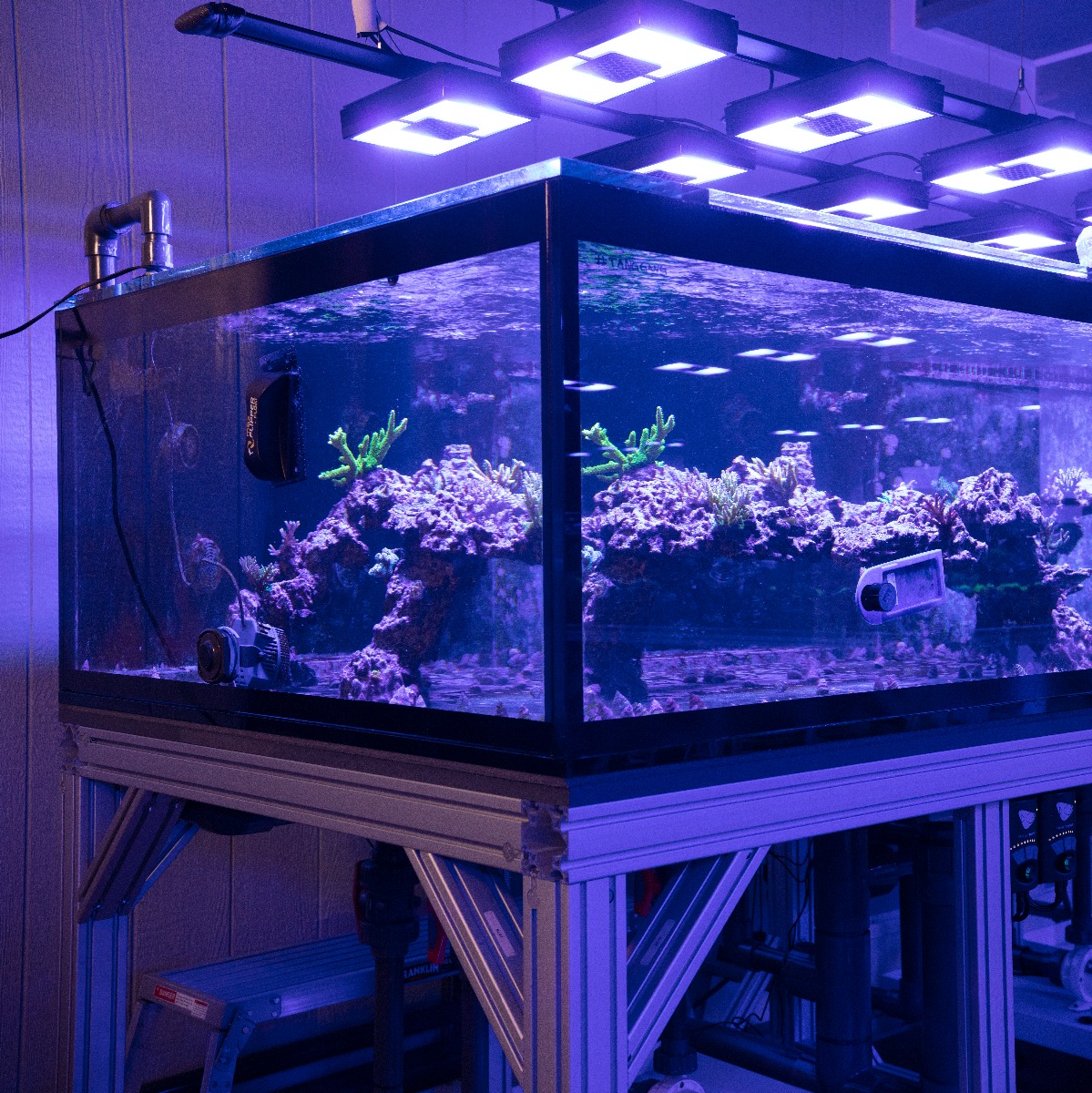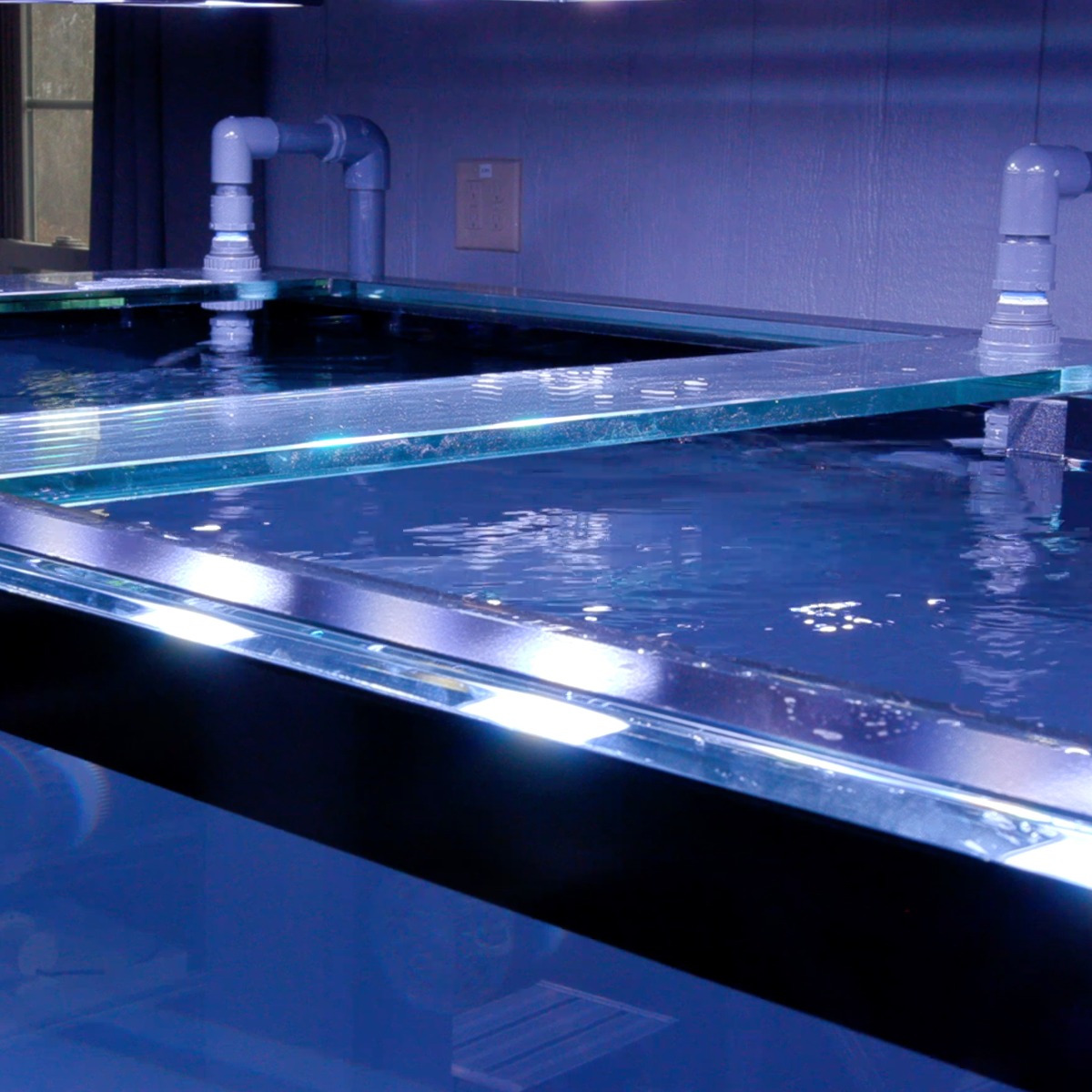Filter
My Wish List
![]() Problems with Big Tanks
Problems with Big Tanks
I want to talk about really big aquariums. I think most people that get into this hobby have some aspiration to have a really big tank. I'm talking 500+ gallons big. An absolute show stopper of a tank. I'd like to talk abut some of the problems that can arise from a tank of this size.
For the most part, the idea of a big tank often is often better than the reality of having one.
![]() 1. Dimensions
1. Dimensions
So the very first thing about big reef tanks is that they are often quite a bit bigger top to bottom than your standard tank. Most of them are going to be 24 inches or deeper, and that doesn't seem like a big problem, but anything past 24 inches is going to be incredibly difficult to take care of the deeper you go.
Some of these tanks aren't just 24-28inches deep, a lot of the time they can get to 36, or even 48 inches deep, and that is going to have some other problems that we are going to talk about later. However, in terms of maintenance and the logistics of working in and around that tank is going to be extremely challenging.
If you don't believe me, go ahead and set a tape measure to 36 inches, put that to your aquarium stand and see where that puts the top of the glass. You'll notice very quickly that, unless you're an NBA center, you're not going to be able to reach the bottom of that tank in any way shape or form. Unless, of course, you plan on going swimming.
So that's the first thing. It's just the maintenance aspect of a very large and very deep tank.

SPS Show Tank
So now you're probably thinking, "Well I'll just stay at 24 inches!", and you can, but you may or may not be happy with the appearance of that tank. For example, I have a couple of tanks that are 10.5 feet long, 4 feet wide, and 24 inches tall, and they look very shallow because of the geometry of that tank. When you want a 500-600 gallon tank but want to limit the height, that means your tank is going to have to go long and wide to fit those specifications. So at that point your tank is going to have this frag tank geometrical appearance.
Aesthetically it would look a whole lot better if it was deeper than 24 inches. Like 30...33...36 inches, and it would look really good if it was 48, but again, at that point you would be going from something you may be able to get your arm into, to basically needing a wetsuit. At 48 inches you're snorkeling.
![]() 2. Observation
2. Observation
The next little drawback to a big aquarium that most people don't necessarily realize is that you do want that big front to back distance. Like I said before about one of my other systems, that distance is about 4 feet. I've seen systems that go back as far as 13 feet. It's really good, in a sense, for the workings of an aquarium. It gives the fish a lot more room to swim around, it's got a lot of surface area for gas exchange, all good things, but visually, all of that front to back distance is practically wasted or, worse yet, is a downside.

Side Angle
So let me explain. Water visually compresses, so when you look at something in an aquarium that's around 4-6 feet deep front to back, it will look like the stuff that's towards the back of that tank is only 12 inches from your face. It's just this optical illusion that happens in water, stuff that's far away looks like it's very close.
You really don't get a good sense of the actual size of the tank, it just looks like a regular tank. Only when you look at the tank from a side angle do you realize, "Oh...this whole side panel could be its own separate show tank", and not just a separate show tank, but a gigantic show tank at that. Even in my case where my show tank is 10 feet long, if you look at it from the narrow side all the way back, it still doesn't look like it's 10 feet long.
The other problem that that introduces is when it comes to observing corals. The best way to go about that is either going to be top down or relatively close to the glass, and when you have a tank that is so large pretty much everything is going to be set way back into the tank. Just the turbidity of the water will end up casting a haze over all of your viewing.
If you've ever been to a public aquarium, it's cool that they have those giant tanks there, but if you're being really critical about it, it's not the best viewing experience compared to a home aquarium. A lot of home aquariums look more crisp and that's because you have this water depth issue where the water itself introduces that hazy appearance.
![]() 3. Catching Fish
3. Catching Fish
Next topic is catching fish. Worst case scenario is let's say you have a large 500...600...700 gallon tank and you notice that one of your fish is sick, and not only is it sick it's getting other fish sick. So now you have a tank that you have to start catching things in, and it is fully aquascaped. Rocks, lots of corals, the whole package, and you have to catch that fish among all of that before it kills off the rest of your fish over the next couple of months. Not a fun task at all. Me and the guys have done it, armed with multiple nets. You just have to hope and pray that you get lucky.
![]() 4. Water Flow
4. Water Flow
The next logistical problem with having a large tank is that it's harder to design water flow in them. Larger tanks need more pumps pointed in more directions.
When I first conceptualized my SPS show tank, I was really hoping to avoid having a lot more of these extra pumps around. So, I ended up designing a system of closed loops in addition to our main return. There's a total of four Ecotech Vectra L2s on these closed loops. There's multiple directions you can face them through the plumbing mechanisms with lockline and stuff. Even though We were getting a lot of flow from our return pump, we still needed more. About six more power heads to be exact.
So we ended up using some Sicce Voyager 10s, which are some very very strong pumps, as well as some AI Nero 5s. It worked out for us, but I was still surprised at how many extra pumps we needed.
It's not good enough to get a few big pumps either. You need have a lot of different pump to introduce spot specific flow. So that's another thing that people might underestimate in a large aqaurium.
![]() 5. Engineering
5. Engineering
In the really big tanks, those 36-48 inch deep aquariums, you start running into engineering challenges because all of that water puts an incredible amount of force on your side panels and your seams. So your tank is literally orders of magnitude less safe than a smaller aquarium.

Euro Bracing
A majority of the time, the tanks that break are these really big, deep tanks. My rule of thumb is to over-build these things like crazy. So I'm talking about armoured seams, heavy euro-bracing, and some 3/4 inch to 1 inch thick glass is going to have to be standard if you aren't going with acrylic from the beginning. Even though I'm not a huge fan of acrylic, once you start to get into the really big stuff you're going to want to go with acrylic. The maximum size tank I would ever even consider for a glass aquarium is going to be about a thousand gallons. After a thousand gallons there better be great engineering behind that because it's a huge risk.
That's why when you see giant shark tanks and other stuff like that, it's all made of acrylic.
![]() 6. Husbandry
6. Husbandry
The last thing that I'll mention about these big tanks, is that sometimes corals do better in smaller tanks. There is an aspect of husbandry that by making husbandry tasks easier, they get done more frequently and better. For example, I noticed that some of our corals in quarantine, which are about 60 gallons, do better in quarantine than they do once they get into our farming setups, which are closer to 300 or more gallons.
I think a lot of that has to do with just how much we dote on these corals in the smaller tanks. Once they get into the bigger tanks a lot of it becomes a lot more generalized, such as broadcast feeding and other things like that, whereas the really up close and personal things like spot feeding tends to happen more in the smaller tanks.
One example I can think of is our Micromussa lords. They were as big a polyp as I've ever seen in quarantine, and then once we got them into the bigger tanks they ended up changing. Don't get me wrong they still look great but there's definitely a difference.
Perhaps the concentration of food is also going to be heavier in a smaller tank compared to a bigger tank that might be more diffused. However, you might notice that type of thing.
![]() Summary
Summary
So that pretty much does it for this topic. I still think that aquarists should strive for as large a tank as possible, especially when it comes to fish, I don't like seeing a lot of fish in aquariums that are too small. So in that sense go for the bigger aquarium, but these are just some considerations that people may or may not think about when scaling up to their dream tank. A lot of times the idea of a big tank is a lot nicer than the reality of actually owning one.
Until next time, Happy Reefing.
